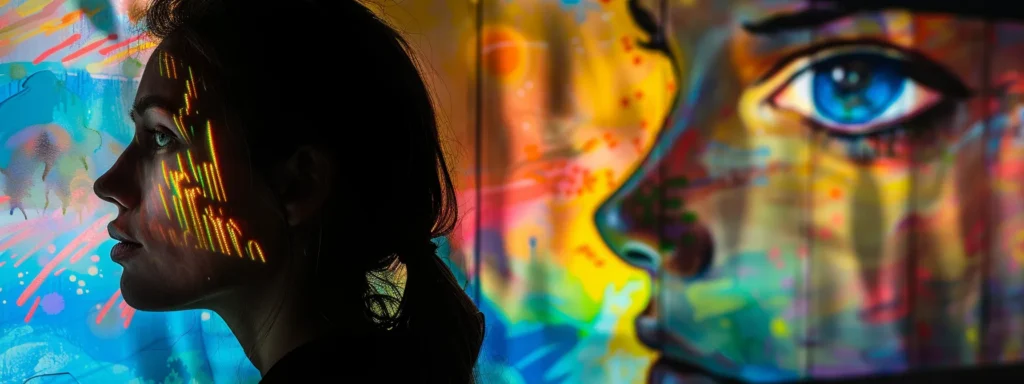PGI
Mastering Creative Problem-Solving Techniques for Effective Solutions
Table Of Contents:
- Understanding Creative Problem-Solving Fundamentals
- Developing a Creative Mindset for Solutions
- Essential Techniques for Mastering Creative Problem-Solving
- Essential Techniques for Mastering Creative Problem-Solving
- Step-by-Step Process for Creative Problem-Solving
- Step-by-Step Process for Creative Problem-Solving
- Real-World Applications of Creative Problem-Solving
- Enhancing Your Creative Problem-Solving Skills
Are you often faced with challenges that seem impossible to solve? Mastering creative problem-solving techniques can empower you to find effective solutions. In this article, you will explore essential methods like the “five whys” approach and insights from Edward de Bono‘s work, helping you shift cognitive bias and develop a confident mindset. By understanding the fundamentals of creative problem-solving, you will enhance your skills and tackle obstacles with renewed confidence, paving the way for success in both personal and professional settings.
Understanding Creative Problem-Solving Fundamentals

Creative problem-solving begins with a clear definition and understanding of its significance in generating effective solutions. You will explore how creativity plays a critical role in this process, emphasizing techniques like convergent thinking. Additionally, you will identify common obstacles to innovative behavior, drawing on insights from thought leaders such as Alex Faickney Osborn, to enhance your creative problem-solving skills.
Defining Creative Problem-Solving and Its Importance
Creative problem-solving is a vital skill that empowers you to generate effective solutions in various contexts. It involves understanding the core concept of integrating creativity and logic to address challenges. By honing your knowledge in techniques such as brainstorming, you can enhance your ability to think outside the box and tap into innovative ideas.
This approach is essential because it encourages you to view problems from different perspectives. Research indicates that engaging in creative problem-solving leads to better outcomes, often resulting in more dynamic solutions. By applying these techniques, you cultivate a mindset that values diverse viewpoints and fosters collaboration, both of which are crucial in today’s complex environment.
Furthermore, mastering creative problem-solving enhances your overall skill set, making you more adaptable and resourceful. You can overcome common obstacles by practicing these techniques, turning potential challenges into opportunities for growth. By continuously developing this skill, you position yourself not just as a problem solver, but as an innovator capable of driving positive change within any organization or situation.
Recognizing the Role of Creativity in Effective Solutions
Recognizing the role of creativity in effective solutions is crucial for your problem-solving toolkit. Utilizing methodologies like root cause analysis enables you to identify underlying issues that contribute to challenges. By applying divergent thinking, you can brainstorm a variety of potential solutions that challenge conventional approaches, allowing for innovative and impactful outcomes.
Convergent thinking complements this process by helping you to focus on evaluating and refining these ideas into actionable steps. Leadership plays a significant role here, as guiding a team through both thinking styles fosters a collaborative environment where creativity thrives. Engaging in this dual approach not only solves problems but also enhances team dynamics and collective ingenuity.
When you embrace creativity in your problem-solving efforts, you position yourself as a forward-thinking leader. Practical examples of this include utilizing design thinking workshops or innovation labs, where diverse perspectives fuel creativity. This structure supports your development of effective solutions that not only address immediate needs but also encourage sustained growth and adaptability in any organization.
Identifying Common Obstacles to Creative Thinking
Emotion often serves as a barrier to creative thinking. When you encounter stress or anxiety surrounding problem-solving, your mind may become rigid, limiting your ability to explore innovative solutions. Recognizing and managing these emotional responses can help you maintain a flexible mindset, enabling you to engage more fully in creative processes such as design thinking.
The culture within your organization significantly impacts your creative capabilities. If the environment discourages risk-taking or punishes failure, it stifles creativity. As a facilitator, you play a key role in cultivating a supportive atmosphere where experimentation and exploration of ideas are embraced, driving collective creativity forward.
Common cognitive biases also hinder effective creative thinking. These biases can cloud your judgment and make it challenging to see problems from alternate perspectives. Encouraging open dialogue and diverse viewpoints allows you to counteract these biases, ensuring that your creative problem-solving approach is robust and comprehensive, ultimately leading to more effective solutions.
Now that you grasp the basics of creative problem-solving, it’s time to shift your focus. A creative mindset opens doors to solutions you may never have considered.
Developing a Creative Mindset for Solutions
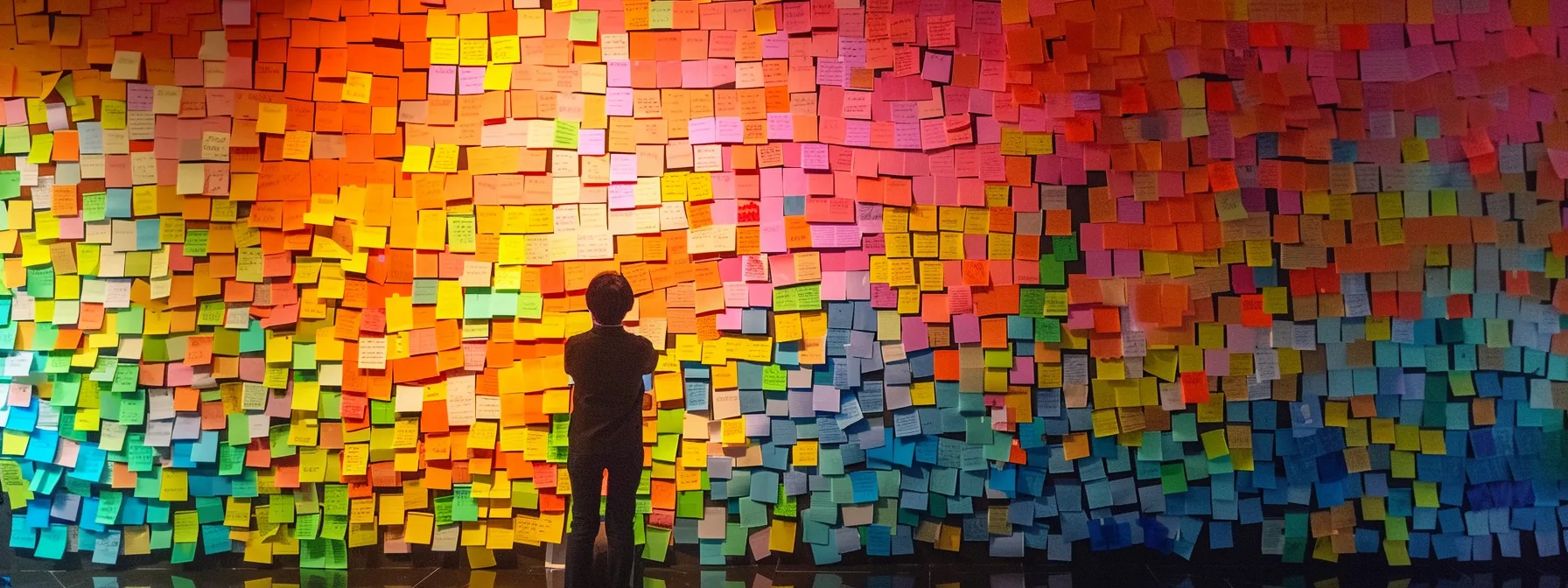
To develop a creative mindset for effective solutions, you must cultivate an open and curious approach to challenges, embracing them as opportunities to innovate. Techniques such as TRIZ and the Six Thinking Hats can help shift your perspective and stimulate creative strategies. Additionally, identifying and overcoming mental blocks and fixed patterns is essential for unleashing your full creative potential.
Cultivating an Open and Curious Approach
To cultivate an open and curious approach, you must embrace the ideation process as an opportunity to explore various possibilities. This mindset encourages you to observe your surroundings and identify potential areas for improvement, prompting innovative thoughts that can lead to new inventions. By fostering an environment where questioning the status quo is welcomed, you enhance your productivity in problem-solving situations.
Awareness of your own biases is essential in this journey. These biases can hinder your ability to see problems from multiple angles and restrict your creative flow. By actively challenging these preconceived notions, you promote deeper observation skills, allowing for richer discussions and more effective solutions that capitalize on diverse perspectives.
Engaging with others is another critical aspect of nurturing this approach. Collaborative brainstorming sessions ignite creativity and drive productive dialogues that open the door to fresh ideas. In such discussions, every contribution, no matter how small, plays a role in refining concepts and overcoming challenges, ensuring that your collective efforts yield impactful results.
Embracing Challenges as Opportunities to Innovate
Embracing challenges is a fundamental aspect of developing your creative problem-solving abilities. When you view obstacles as opportunities for innovation, you open the door to new ideas and solutions. For instance, you might encounter a roadblock in a project; instead of feeling defeated, you can experiment with different approaches to gain insights that elevate your final outcome.
Your mindset directly influences how you address challenges. By adopting a perspective that sees hurdles as chances for improvement, you position yourself as an expert in creative problem-solving. This shift can lead to unexpected breakthroughs, as you tap into your creativity and explore alternatives that may have otherwise gone unconsidered.
Moreover, fostering a culture of experimentation within your team can drive collective innovation. Encourage your colleagues to share their unique viewpoints and to take calculated risks. When everyone collaborates to overcome difficulties, it enhances your overall effectiveness in problem-solving and leads to more impactful solutions that can be applied to future projects.
Overcoming Mental Blocks and Fixed Patterns
Overcoming mental blocks requires intentional strategies that focus on enhancing your critical thinking and creativity. One effective method is to conduct a SWOT analysis (Strengths, Weaknesses, Opportunities, Threats) on your challenges. This process enables you to systematically dissect issues, recognize your competencies, and identify areas for growth, ultimately freeing you from rigid thinking patterns.
Empathy plays a critical role in unlocking creativity. By putting yourself in the shoes of others impacted by your decisions, you expand your understanding and perspective regarding problems. This shift in attention can spark new ideas and approaches, allowing you to break free from conventional thinking and arrive at more innovative solutions.
To foster a creative mindset, it’s vital to establish an organized environment that encourages exploration. When you create spaces that promote collaboration and open dialogue, you invite diverse viewpoints that contribute to overcoming mental blocks. This environment nurtures your ability to think differently, stimulating fresh ideas that can lead to effective solutions.
You have nurtured a creative mindset, and it has opened doors. Now, let’s explore essential techniques that will sharpen your ability to solve problems with confidence.
Essential Techniques for Mastering Creative Problem-Solving
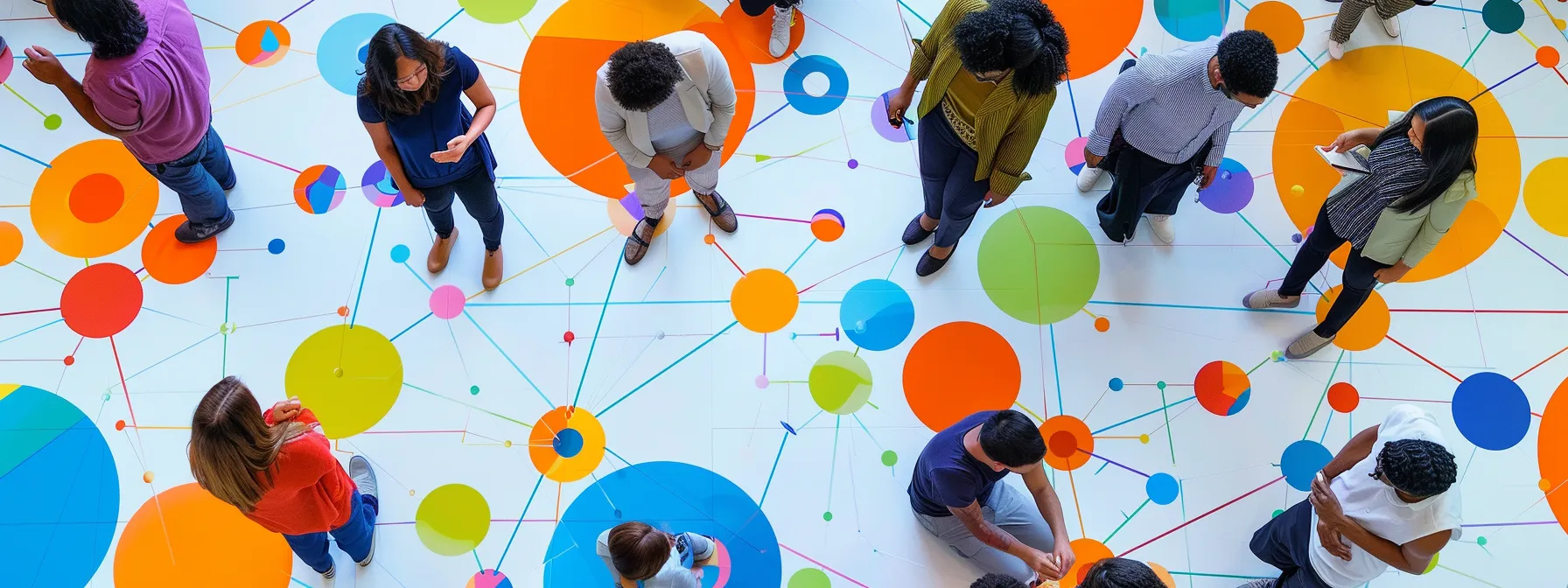
Essential Techniques for Mastering Creative Problem-Solving
Effective problem-solving requires actionable techniques. You will learn how to apply brainstorming methods effectively to harness group creativity. Utilizing mind mapping will help you generate ideas visually. The SCAMPER technique provides a structured approach for innovation. You will also explore lateral thinking strategies, leveraging analogies to spark new ideas, enhancing your function in change management through intuitive insights and analytics.
Applying Brainstorming Methods Effectively
Applying brainstorming methods effectively can significantly enhance your creative problem-solving capabilities. One effective approach is to implement “Thinking Into Results” techniques, which encourage you to expand your thinking by setting clear objectives. This allows you to generate a wider array of ideas and solutions, ultimately fostering a collaborative environment that boosts group creativity.
The “FImagine Network” provides a structured framework that you can utilize during brainstorming sessions. By focusing on group dynamics and guiding participants to share their thoughts without judgment, you create a safe space for innovation. This network encourages contributions from all members, helping you tap into the diverse perspectives necessary for effective solutions.
Additionally, it is essential to maintain a clear focus during brainstorming to ensure productivity. You can designate a facilitator to steer discussions and keep everyone aligned with the goals of the session. By harnessing brainstorming methods and refining your approach with tools like “Thinking Into Results,” you can transform initial ideas into actionable solutions that meet your organizational challenges head-on.
Utilizing Mind Mapping for Idea Generation
Utilizing mind mapping for idea generation can transform your approach to creative problem-solving. This visual technique allows you to structure thoughts and concepts, making it easier to see connections and potential solutions. By creating a mind map, you enhance your understanding of a problem and can brainstorm ideas without limitations, tapping into your creative potential effectively.
When you start a mind map, begin with the central concept at the center of the page. From there, branch out to related ideas, thoughts, and solutions. This process not only helps you organize your thoughts but also encourages participation from team members, fostering collaboration. As everyone contributes their perspectives, you will likely discover innovative solutions that may have initially gone unnoticed.
To maximize the benefits of mind mapping, consider using digital tools that allow real-time collaboration. These tools enable you to share your mind maps with colleagues and incorporate their feedback instantly. In this way, mind mapping becomes more than just a personal brainstorming exercise; it evolves into a collaborative effort that drives innovative thinking and enhances overall team productivity in problem-solving scenarios.
Implementing the SCAMPER Technique
Implementing the SCAMPER technique is a powerful way to enhance your creative problem-solving abilities. SCAMPER stands for Substitute, Combine, Adapt, Modify, Put to another use, Eliminate, and Rearrange. By applying these prompts systematically, you can generate a diverse array of ideas tailored to your specific challenges.
As you utilize the SCAMPER technique, consider how each element can be applied to a current project or issue you face. For example, when adapting a product, think about what features can be modified to meet new consumer demands or how you can combine existing solutions to create something uniquely effective. This approach not only stimulates creativity but also encourages a deeper exploration of existing solutions.
To make the most of the SCAMPER technique, engage your team in a collaborative session where everyone shares insights on each prompt. This collective brainstorming can reveal innovative solutions that may not have surfaced in isolation. By fostering such an inclusive environment, you enhance your capacity to overcome challenges and drive successful outcomes in your problem-solving efforts.
Exploring Lateral Thinking Strategies
Exploring lateral thinking strategies is essential for enhancing your creative problem-solving capabilities. Lateral thinking encourages you to approach problems from unconventional angles, allowing you to generate innovative solutions that might not be immediately obvious. For example, when dealing with a block in a project, instead of following traditional routes, you might brainstorm alternate uses for existing resources, leading to breakthrough insights that drive progress.
Incorporating techniques such as random word stimulation can further enrich your lateral thinking practice. By introducing random words into your problem-solving process, you can force connections that may not align intuitively, helping you to think outside the box. This technique can awaken fresh ideas and encourage you to explore areas of your challenge that you may have previously overlooked.
Moreover, engaging in group lateral thinking exercises can amplify your creative potential. Collaborating with team members and encouraging open discussion can expose you to diverse perspectives, sparking unique ideas. By embracing this collective approach, you enhance your problem-solving skills and cultivate an adaptable mindset crucial for navigating complex challenges in both personal and professional contexts.
Leveraging Analogies to Spark New Ideas
Leveraging analogies can greatly enhance your creative problem-solving skills by enabling you to draw connections between seemingly unrelated concepts. By comparing your current challenge to a different but familiar situation, you unlock new insights and perspectives that can lead to innovative solutions. For instance, if you’re working on improving team dynamics, you might draw parallels to sports teams and their strategies for collaboration and communication.
To effectively harness analogies, structure your thought process by asking how a different context addresses similar challenges. This method expands your problem-solving capabilities by encouraging you to think outside traditional frameworks. For example, if you’re facing an obstacle in product development, consider how the fashion industry approaches seasonal changes or trends; this can provide valuable ideas for adapting your product line to meet evolving customer demands.
Additionally, when you involve your team in discussions about analogies, it fosters a collaborative environment that encourages diverse viewpoints. Bringing various perspectives into the conversation can lead to richer discussions and creative breakthroughs. By routinely practicing this technique, you enhance your ability to generate innovative solutions that effectively address complex problems, ultimately supporting your journey in mastering creative problem-solving.
You have learned the essential techniques, and now it’s time to put them into action. Here’s a clear step-by-step process to enhance your creative problem-solving skills and achieve real results.
Step-by-Step Process for Creative Problem-Solving
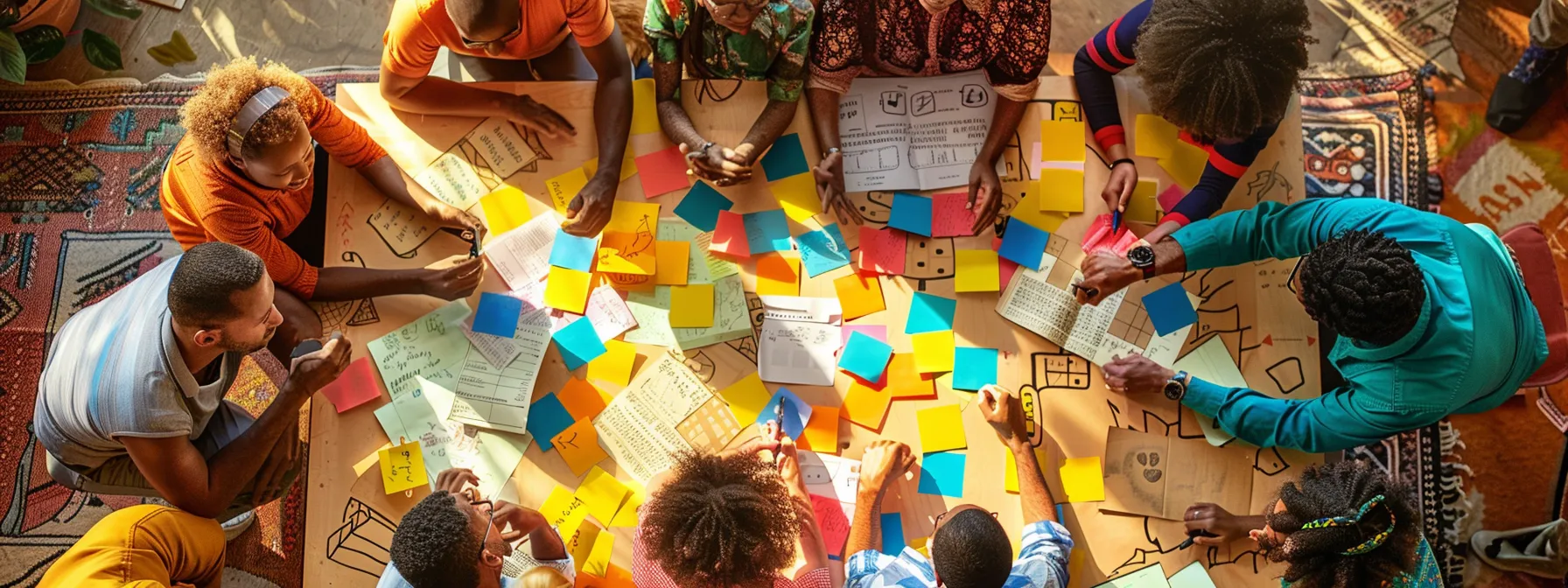
Step-by-Step Process for Creative Problem-Solving
To master creative problem-solving techniques, you will follow a structured approach that includes clearly defining the problem at hand, generating a wide range of potential solutions, and evaluating ideas to select the most promising options. Next, developing and testing the chosen solution is essential, followed by reflecting on outcomes and lessons learned to enhance future problem-solving efforts.
Clearly Defining the Problem at Hand
Clearly defining the problem is the first and most crucial step in your creative problem-solving process. When you articulate the problem, you set the stage for generating effective solutions. Take the time to gather information and assess the situation; this clarity will guide your approach and ensure that you are addressing the root cause rather than just the symptoms.
As you frame the problem, consider using the “5 Whys” technique, which involves asking why repeatedly until you reach the core issue. This method allows you to peel back layers and discover the underlying factors contributing to the challenge. By digging deeper, you establish a solid foundation for the solutions you will explore later in the process.
Lastly, be sure to involve your team in clearly defining the problem, as their diverse perspectives can enhance your understanding. Encourage open dialogue and collective brainstorming to ensure that all angles are considered. This collaboration not only clarifies the problem but also fosters a sense of ownership among team members, making them more invested in the solutions you generate together.
Generating a Wide Range of Potential Solutions
Generating a wide range of potential solutions is a critical component of the creative problem-solving process. To achieve this, you should engage in brainstorming sessions where all participants feel encouraged to share their ideas freely, no matter how unconventional they may seem. By fostering an atmosphere of openness, you can unlock a myriad of suggestions that may lead to breakthroughs you wouldn’t have considered otherwise.
Incorporating techniques like mind mapping can be particularly beneficial in this stage. As you map out ideas visually, you create connections between different thoughts, which can help you see relationships and inspire new solutions. This approach allows you to break free from linear thinking and explore innovative avenues that lead to more comprehensive options in addressing the problem at hand.
Finally, it’s essential to prioritize inclusivity during this phase. Actively seek input from diverse team members, as their varying backgrounds and perspectives can provide insights that enhance the solution generation process. By embracing collaboration and valuing each contribution, you set the groundwork for crafting effective strategies that not only resolve the current issue but also bolster your team’s overall problem-solving capacity.
Evaluating Ideas and Selecting the Most Promising
As you evaluate ideas generated during your brainstorming sessions, it’s important to establish clear criteria that align with your goals. Consider factors like feasibility, impact, and alignment with organizational objectives to guide your decision-making process. By focusing on these key aspects, you can effectively narrow down the options to those that are most promising.
Create a collaborative environment where team members can share insights on the proposed ideas. Facilitate discussions that allow diverse perspectives to emerge, ensuring that every voice is heard. This approach not only enriches the evaluation process but also leads to a more robust selection of solutions, as collective input often reveals strengths and weaknesses you may have missed.
Finally, utilize a structured scoring system or matrix to rank the ideas based on your established criteria. This technique helps quantify your assessment and bring clarity to the decision-making process. By systematically analyzing and ranking potential solutions, you enhance your ability to select the most effective strategies, ultimately fostering success in your creative problem-solving efforts.
Developing and Testing the Chosen Solution
Developing the chosen solution involves turning your ideas into actionable plans. Begin by outlining the steps required to implement this solution, assessing resources, timelines, and potential obstacles. Clearly defined objectives will guide your execution process, ensuring you remain aligned with your overall goals while fostering accountability within your team.
Once the development stage is complete, rigorous testing becomes essential. This not only verifies the effectiveness of your solution but also highlights areas for improvement. By employing pilot programs or small-scale tests, you gain valuable feedback and insights, allowing you to refine your approach before a full-scale rollout. Engaging your team in this testing phase encourages collaboration and further innovation.
Finally, after testing and refining, it’s important to document the outcomes. Analyzing what worked well and what didn’t helps consolidate learning and applies those lessons to future problem-solving endeavors. By keeping track of these insights, you enhance your creative problem-solving skills, building a resource base that empowers your continuous development in tackling complex challenges.
Reflecting on Outcomes and Lessons Learned
Reflecting on outcomes is an essential part of the creative problem-solving process. After implementing a solution, take the time to analyze the results. Consider both the successes and the areas that didn’t meet expectations, as this dual focus will enhance your understanding of what works and what needs improvement.
As you evaluate the effectiveness of your solution, gather feedback from your team and stakeholders. This collaborative reflection allows you to gain insights from diverse perspectives, enriching your analysis. By understanding different viewpoints, you can identify key lessons learned that can inform future problem-solving efforts and strengthen your overall approach.
Lastly, document your findings to create a valuable resource for the future. Capturing lessons learned not only solidifies your own growth but also provides guidance for your team in subsequent challenges. This practice fosters a culture of continuous improvement within your organization, ultimately enhancing everyone’s creative problem-solving capabilities.
Creative problem-solving thrives in real-world situations. Let’s look at how these ideas come to life in everyday challenges.
Real-World Applications of Creative Problem-Solving
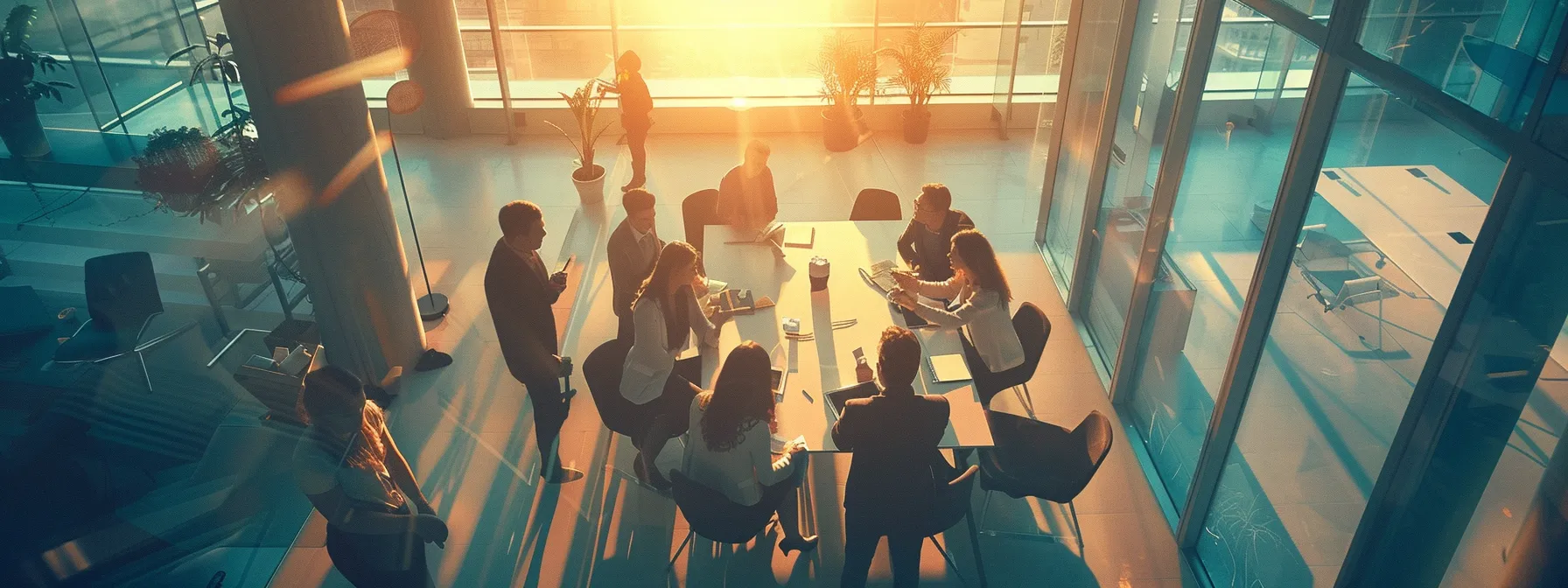
In this section, you will explore real-world applications of creative problem-solving techniques that lead to effective solutions. You will analyze case studies of innovative solutions in business, showcasing methods that have driven success. Success stories from creative thinkers and leaders will illustrate how these techniques have been applied across various industries, enhancing performance and problem-solving capabilities.
Case Studies of Innovative Solutions in Business
Consider the case of a major television network facing declining viewership. By applying creative problem-solving techniques, they redefined their approach to content creation. Engaging in audience feedback sessions led them to develop interactive programming that increased viewer participation, ultimately revitalizing their ratings and establishing a stronger connection with their audience.
Another notable example is a tech company that struggled with employee retention. They utilized brainstorming methods to gather insights directly from employees, which uncovered key issues related to work-life balance. By implementing flexible working hours and enhanced wellness programs as a result, the company significantly improved job satisfaction and reduced turnover rates.
In the retail sector, a well-known brand faced inventory management challenges due to fluctuating demand. By leveraging techniques such as mind mapping, they analyzed their supply chain processes and identified gaps. Innovating with predictive analytics helped them adjust their stock levels more accurately, leading to reduced waste and increased profitability.
Success Stories From Creative Thinkers and Leaders
One prominent example of a creative thinker successfully leveraging problem-solving techniques is Howard Schultz, the former CEO of Starbucks. Facing intense competition and market challenges, Schultz encouraged a grassroots ideation process within his team. By actively seeking feedback from employees and customers, Starbucks revamped its product offerings, leading to the introduction of new beverages and a renewed focus on customer experience, ultimately driving significant growth.
Another compelling case is that of Sir Richard Branson, who utilized creative problem-solving to navigate the airline industry with Virgin Atlantic. Branson recognized gaps in customer service and satisfaction, prompting him to implement a series of innovative approaches, such as enhancing onboard experiences and offering flexible ticketing options. His commitment to addressing customer pain points transformed Virgin Atlantic into a recognized brand, showcasing how creativity in problem-solving leads to competitive advantages.
Additionally, the tech giant Apple exemplifies mastery in creative problem-solving through its approach to product development. Leaders at Apple, including Steve Jobs, focused on fostering a culture of innovation by encouraging diverse perspectives within teams. By applying techniques like iterative design and testing, Apple continuously refined its products based on user feedback, establishing a reputation for excellence and captivating consumer interest worldwide.
Applying Techniques Across Different Industries
In various industries, applying creative problem-solving techniques can significantly enhance your effectiveness in addressing challenges. For instance, the healthcare sector has adopted mind mapping to improve patient care processes. By visually organizing patient information and treatment plans, healthcare professionals can identify gaps and streamline communications, ultimately resulting in better patient outcomes. This approach creates a holistic view that informs decision-making and enhances collaborative efforts among medical teams.
The education industry benefits from creative problem-solving by employing brainstorming sessions to develop engaging curricula. Educators utilize techniques like the SCAMPER method to adapt existing lessons, making them more interactive and relevant to students’ needs. By bringing diverse perspectives into the conversation, teachers create learning environments that foster curiosity and critical thinking, effectively preparing students for real-world challenges.
In the tech industry, companies often adopt lateral thinking strategies to innovate their products and services. For example, a software firm might host collaborative workshops that encourage staff to brainstorm unconventional uses for their existing technologies. This practice not only stimulates creativity but also leads to the development of new features or applications that cater to emerging market demands, driving business growth and enhancing customer satisfaction.
Creative problem-solving holds power in everyday life. Let’s explore how you can sharpen these skills and unlock new possibilities.
Enhancing Your Creative Problem-Solving Skills
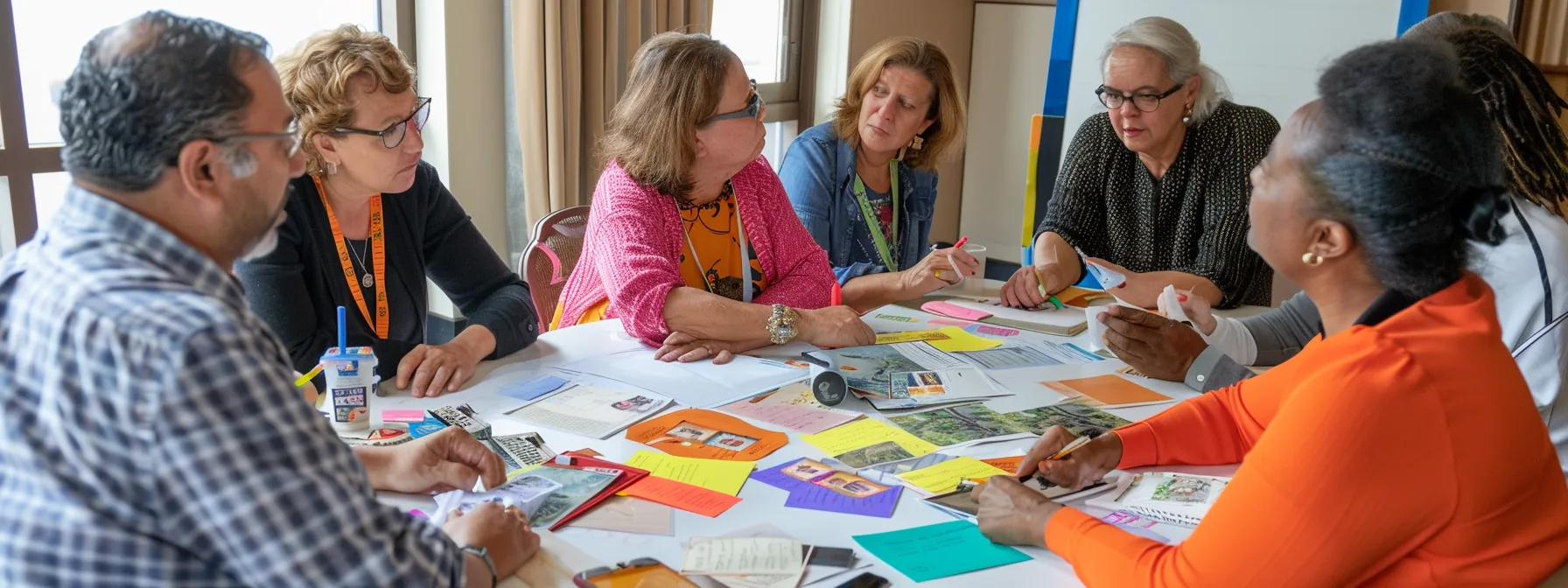
Engaging in continuous learning and practice is crucial for enhancing your creative problem-solving skills. Collaborating with others broadens your perspectives, sparking innovative ideas. Utilizing tools and resources for skill development empowers your approach to challenges, while setting personal challenges fosters your creativity. Each of these strategies will be explored in detail, providing you with practical insights to strengthen your problem-solving abilities.
Engaging in Continuous Learning and Practice
Engaging in continuous learning is essential for enhancing your creative problem-solving skills. You can explore various avenues, such as online courses, workshops, and seminars, that provide insights into the latest problem-solving techniques. By dedicating time to learning, you enrich your understanding and refine your ability to tackle complex challenges effectively.
Incorporating regular practice into your routine is equally crucial. You might consider setting aside specific time for brainstorming sessions or collaborative workshops with your team. This reinforces your skills by allowing you to apply new techniques in real-world scenarios, ultimately boosting your confidence as a creative problem solver.
Moreover, seeking feedback from peers and mentors can play a vital role in your development. Constructive criticism helps you identify areas for improvement and fosters a culture of growth. By staying open to new ideas and adapting your strategies based on feedback, you position yourself to continuously evolve and excel in creative problem-solving.
Collaborating With Others to Broaden Perspectives
Collaborating with others is a powerful method for broadening your perspectives in creative problem-solving. Engaging diverse team members in discussions can unveil unique insights that you might not have considered alone. For instance, when you involve individuals from various departments in brainstorming sessions, you create a rich dialogue that fosters innovative thinking and leads to more comprehensive solutions.
Another advantage of collaboration is the opportunity to challenge your own preconceived notions. When you work alongside colleagues who bring different backgrounds and experiences to the table, you enhance your understanding of the problem at hand. This collective intelligence can stimulate your creativity, allowing you to approach challenges from various angles and uncover solutions that are informed by multiple viewpoints.
Finally, fostering a culture of teamwork and open communication can significantly improve your problem-solving effectiveness. By encouraging your team to share their ideas freely, you create an environment that nurtures creativity and innovation. This collaborative atmosphere not only helps generate a wider array of potential solutions but also strengthens team bonds, ultimately driving successful outcomes for your projects.
Utilizing Tools and Resources for Skill Development
To develop your creative problem-solving skills effectively, consider leveraging various tools and resources tailored to enhance creativity. Online platforms offer a plethora of courses that delve into specific techniques like design thinking or lateral thinking. Engaging with these resources will not only deepen your understanding but also provide practical applications to implement in your daily challenges.
In addition to online courses, collaborative software tools can significantly boost your problem-solving capabilities. Tools like Miro or Trello facilitate brainstorming sessions and project management, helping you organize ideas and track progress efficiently. By utilizing these resources, you create an environment that encourages participation and fosters the exchange of innovative concepts among team members.
Furthermore, joining communities focused on creative problem-solving is invaluable for your skill development. Participating in forums or workshops allows you to share experiences and gain insights from others who face similar challenges. This exchange of knowledge equips you with diverse strategies and fresh perspectives, enhancing your overall effectiveness in approaching complex problems with creativity and confidence.
Setting Personal Challenges to Foster Creativity
Setting personal challenges is a powerful strategy to foster creativity and enhance your problem-solving skills. By deliberately pushing yourself to tackle new tasks, you can stimulate your mind and discover innovative ways to approach problems. For example, you might challenge yourself to solve a complex problem using a different perspective or by limiting resources, forcing you to think outside traditional parameters.
These challenges create practical opportunities for growth. You can set specific goals, such as completing a creative project within a tight deadline or working on a problem using a new technique each week. This focused practice not only improves your problem-solving capabilities but also builds your confidence in applying creative methods across various situations.
Moreover, personal challenges can be tailored to address your unique needs or workplace demands. If you find yourself frequently facing roadblocks, you can create scenarios that require unconventional thinking to overcome. Tracking your progress and reflecting on the outcomes of these challenges will enhance your learning process and prepare you for real-world applications, ultimately helping you master effective creative problem-solving techniques.



